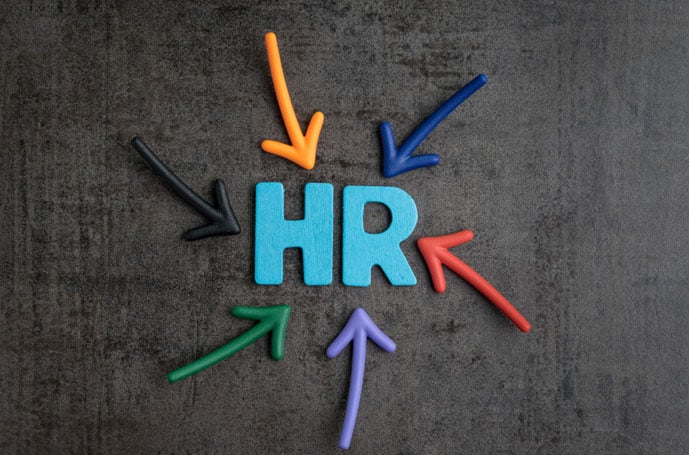In 2019, the U.S. retail market was the largest in the world, with around 29 million employees. The industry is renowned for its notoriously demanding work, long hours, unstable contracts, and hostile work environments – where abuse from customers and employees alike is commonplace.

In 2019, the U.S. retail market was the largest in the world, with around 29 million employees. The industry is renowned for its notoriously demanding work, long hours, unstable contracts, and hostile work environments – where abuse from customers and employees alike is commonplace.
In light of that, it’s no surprise there’s an increasing demand for employers to prioritize their retail staff’s mental health. Unfortunately, employees in this sector suffer some of the lowest levels of well-being in the U.S. workforce.
According to research, more and more retail workers feel unappreciated, suffer increased mental health and behavioral problems and have higher levels of absenteeism. As a result of such poor job satisfaction, an increasing number of them are now looking for new jobs.
Ultimately, retail workers want their employers to listen to them and implement meaningful changes that will encourage them to stay in the industry and improve their well-being.
That said, what do retail workers really want?
1. Respect
This is one of their most significant demands, and when workers have to ask for workplace rights like this, it’s no wonder their well-being is taking the hit.
Adam Reich and Peter Bearman, sociologists from Columbia, conducted a research project to assess how workers at Walmart navigated their jobs. According to Bearman, there’s “a baseline of human dignity that associates feel they’re being denied. But, when you look at the industry as a whole, this experience isn’t just isolated to Walmart employees; it permeates the sector.
Generally, employees report feeling burdensome and dispensable, with some saying they’re a “cost their employers wanted to cut.” It seems that in the industry in general, workers lack a sense of purpose and value. This isn’t surprising when you consider their working environments, pay, and staff experiences.
Many retail workers report abuse and violence on the job, exacerbated by negative depictions of retail work in the media (like lazy and uneducated). With negative experiences like these becoming commonplace, retail workers simply want more respect from their customers and employers.
2. Recognition and Benefits
This is nothing new – retail workers have been asking for this for years. But with the COVID pandemic exacerbating existing inequalities within the workforce, discussions were reignited and are ongoing.
The retail industry is renowned for denying benefits freely given to workers in other sectors, such as paid sick leave. Many employers get away with this by employing a largely seasonal or part-time workforce. For instance, retail employers can easily avoid providing workers with benefits considered standard in many other industries by using the common practice of ensuring that most of their employees are assigned less than full-time hours.
Protests on these issues are increasingly common, with Amazon and Whole Foods workers conducting some of the biggest protests the retail industry has ever seen.
In the U.S., strikes erupted when essential workers demanded greater protection during the pandemic’s height. Workers at Amazon and Whole Foods reportedly called in sick en masse to mandate paid leave and better working conditions during the Coronavirus pandemic.
According to the Intercept, Amazon, Wholefoods, Target, and FedEx employees demanded “compensation for all unpaid time off used since the beginning of the COVID-19 crisis in March; hazard pay or paid sick leave to be provided for the duration of the pandemic; protective equipment and all cleaning supplies to be provided at all times by the company, and a demand for full corporate transparency on the number of cases in facilities.”
Workers have reached their tipping points and are claiming the time is now to improve working conditions across the retail industry.
3. Protection
The threats and abuse that retail workers face steadily increased during the pandemic, and the war of mask-wearing will likely continue in public transportation venues.
According to reporter Abha Bhattarai from the Washington Post, “Mixed messaging and politicization have turned a public health safeguard into a lightning-rod issue…as a result, workers have been berated, even assaulted, by aggressive anti-maskers.”
Retail workers are no strangers to physical/emotional abuse and threats in the workplace, from robbery to verbal assault. As a result, employees are calling on employers to offer greater protection – and for a good reason, no one should ever have to feel unsafe in their workplace.
4. Control
Employment contracts for hourly retail work are a tremendous example of this lack of control. In particular, these contracts don’t guarantee employees work hours, resulting in income uncertainty. While many employees benefit from the flexibility of these arrangements, the contract itself is open to mistreatment and abuse from negligent employers. Needless to say, employees typically have little to no say over their working hours or employment benefits.
In the wider scheme of the retail workplace, there’s little autonomy for employees to take control of their careers. Often, employers don’t provide the necessary professional development opportunities so that workers can move up the corporate ladder. At the same time, retail workers have very little control over their day-to-day work lives – including having a say over their schedules or having an input in how things are run.
5. Adequate staffing for the workload
In the US alone, 2.1 million retail jobs were lost during the pandemic. This dramatically increased the strain on current workers, who had to carry even more demanding workloads, and increased worker stress making many workers unable to strike a healthy work-life balance.
Workers are being added back at a good rate now, per recent labor reports. With more new hires, employers could ease the strain on employees by distributing workloads more evenly. The gaps in the workforce are beginning to close; however, there’s still a long way to go to make the situation fairer for retail employees across the country.
6. Predictable schedules
For retail workers, consistent and dependable schedules are few and far between. A survey of thousands of hourly workers showed schedule stability was the most important job factor after higher wages and health care.
Unpredictable schedules have harsh repercussions for employees, particularly for their pay – with no set hours or guaranteed work, it’s difficult for employees to achieve financial stability.
A lack of flexibility is also tough on working parents who find organizing childcare a challenge, and irregular shifts make it impossible for many workers to establish consistent sleep schedules, resulting in many employees working illegal hours.
Ideally, retail workers want an environment that caters to flexible schedules when necessary while providing dependable schedules that promote a better balance between home life and work.
Improving the Retail Worker Experience
It will involve a genuine commitment to change from the top down to make the workplace a more welcoming and tolerable environment for retail employees. For a moment, we saw COVID-19 offer some relief. Retail employees who worked during the pandemic were branded ‘key workers’ and celebrated for their selflessness. However, in the face of strikes and protests over better working conditions across industries with frontline workers and the pending “return to normal,” this change in attitude may fail to stick.









